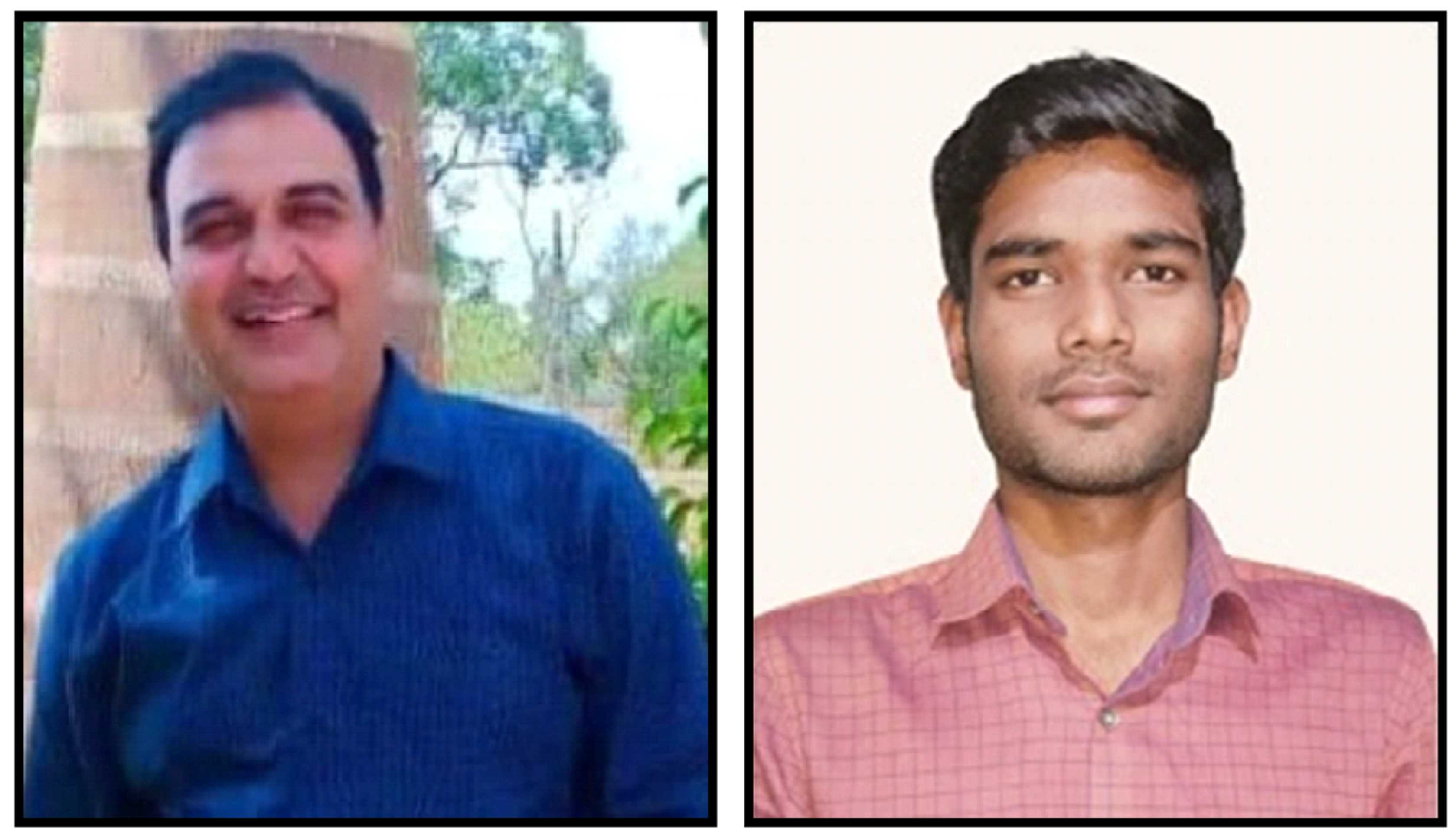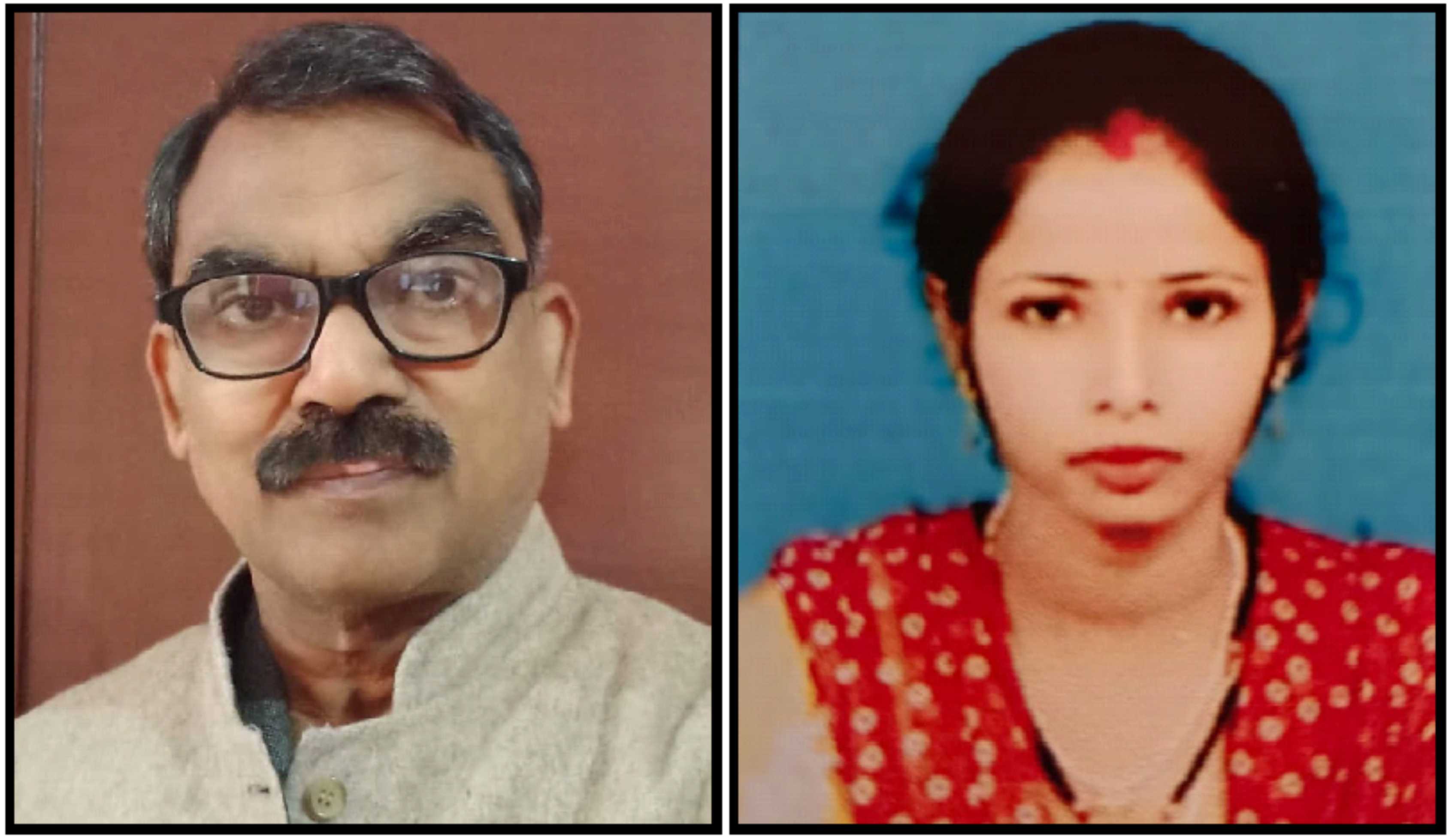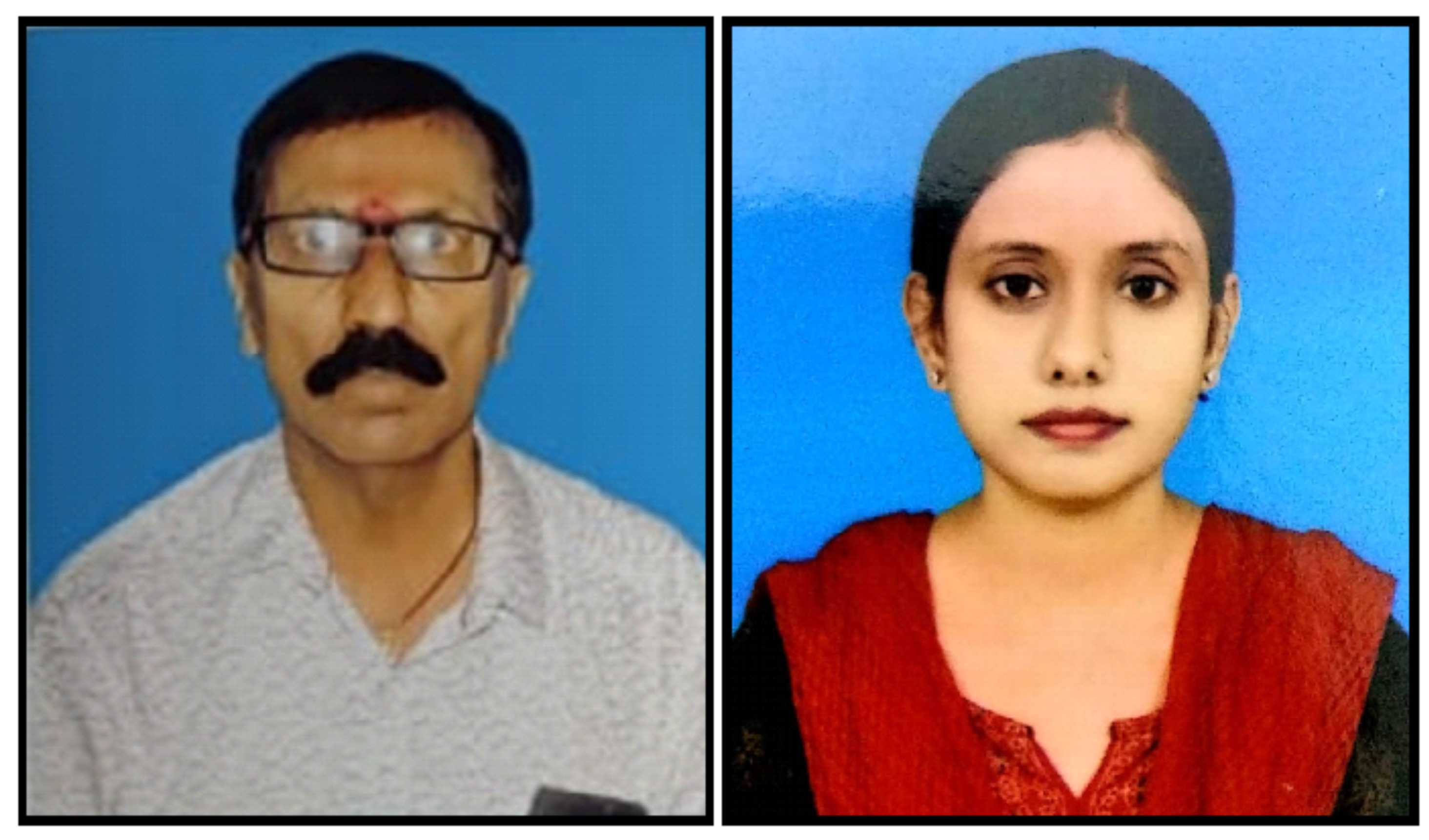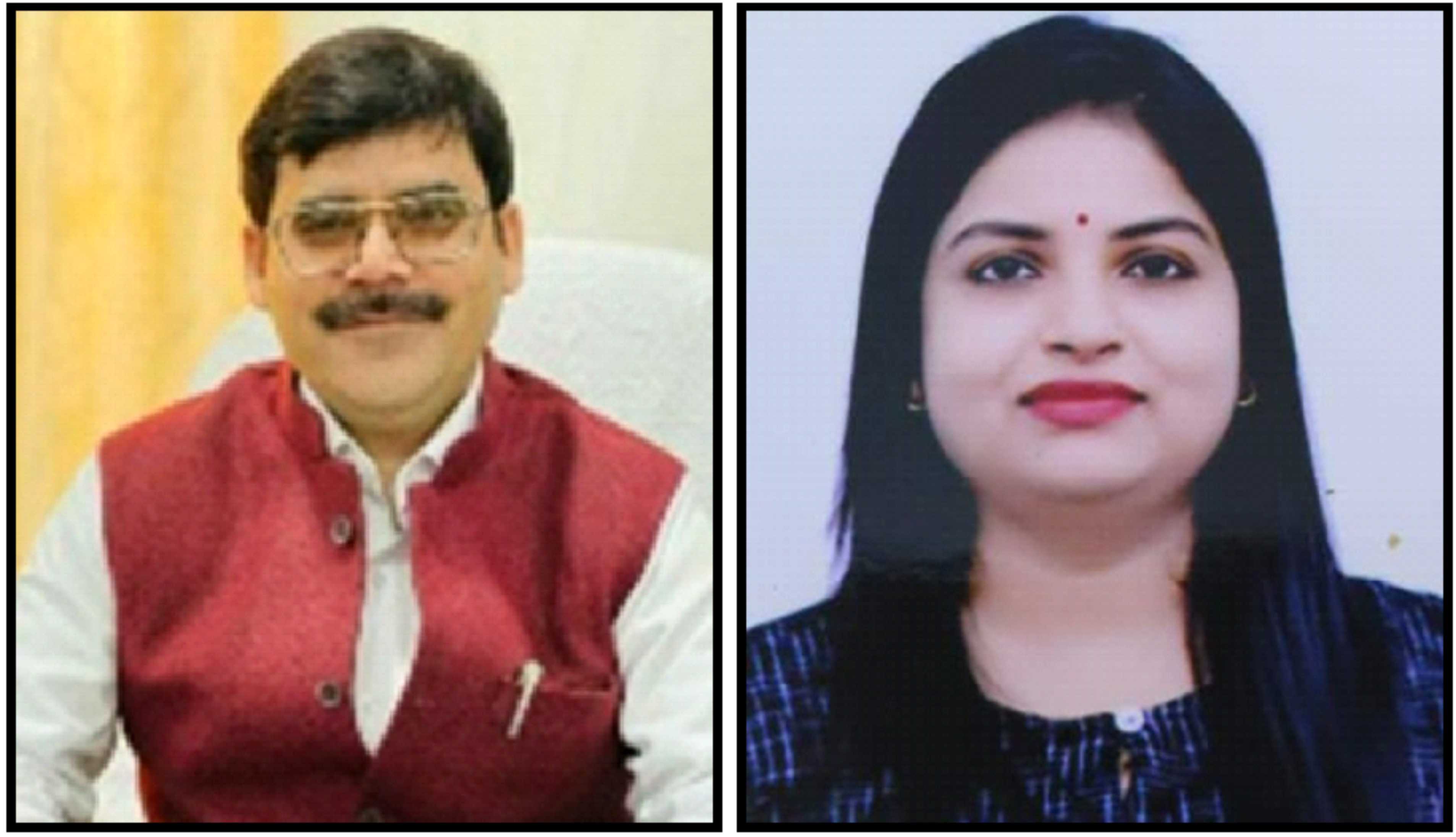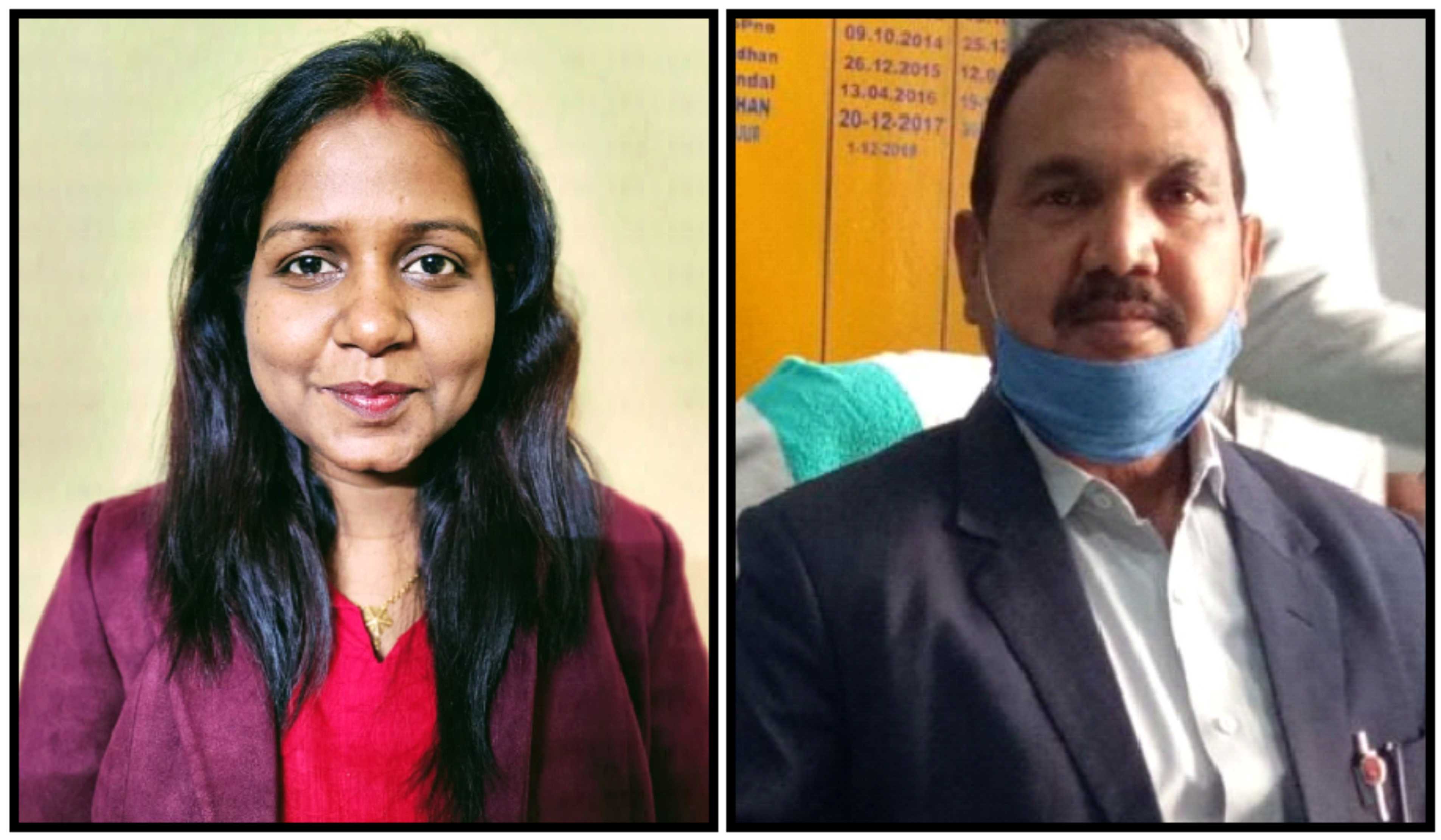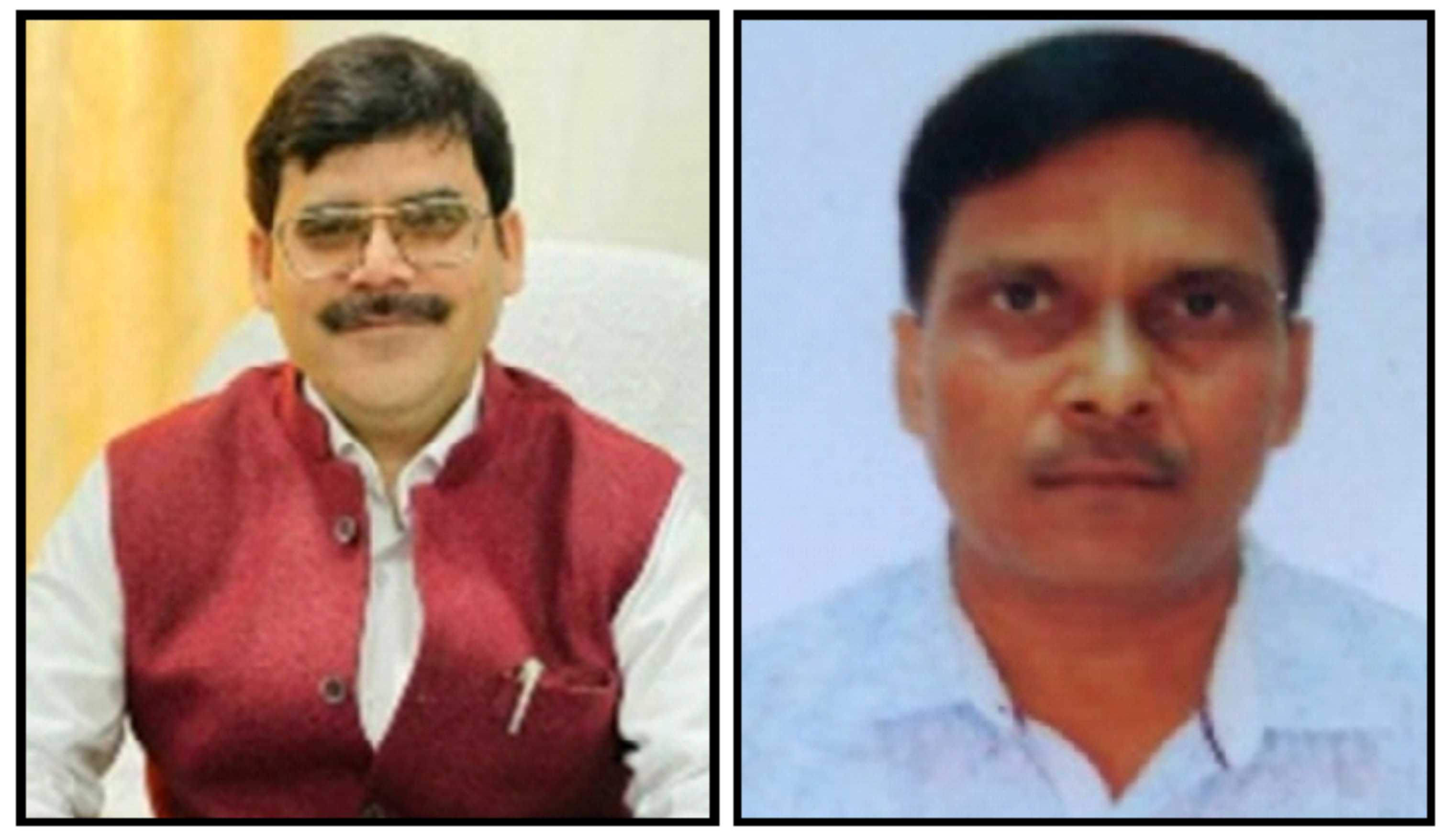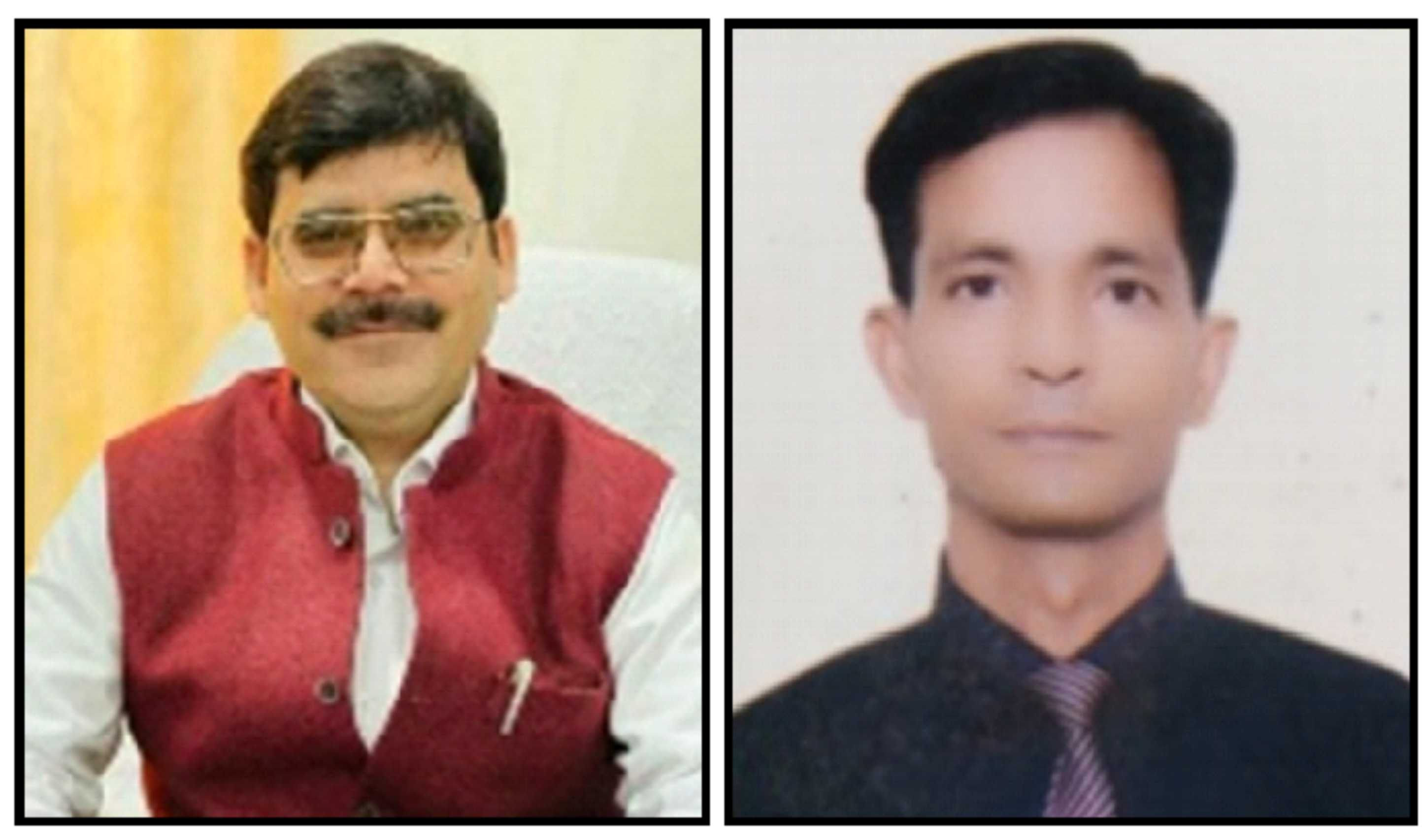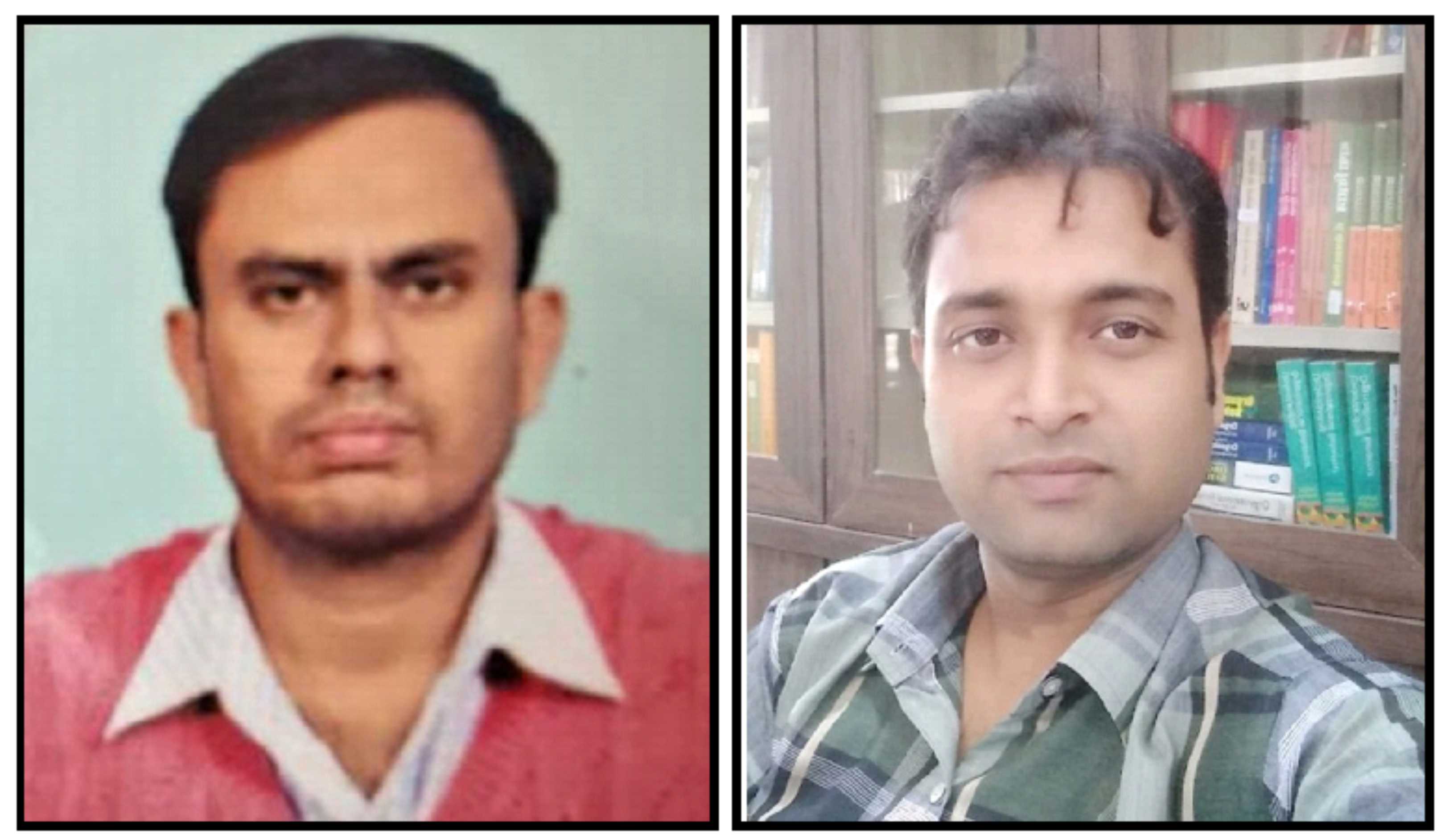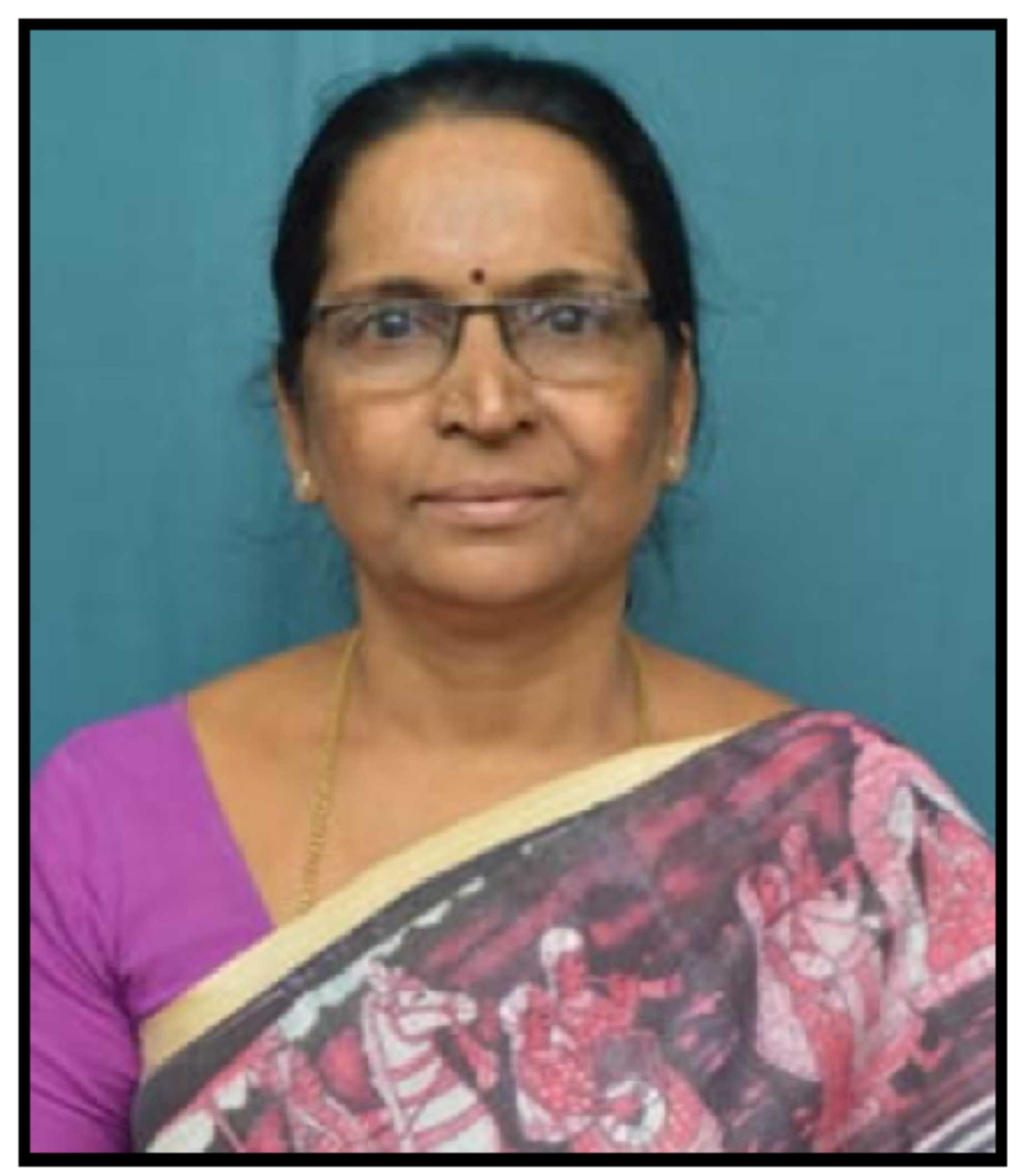- Call Us: +91 9425210308
- Email Us: shodhsamagam1@gmail.com
- RNI : CHHBIL/2018/77892
- ISSN : 2581-6918 (Online), 2582-1792 (Print)
Archieved Data
Publishing Year : 2024
Read Abstract
The banking and finance sector in India is undergoing innovative changes in response to the Government of India’s financial inclusion initiative. Several other initiatives have been launched by the Government that focuses on smart and simple banking methods. Small Finance Bank is one such innovative solution with the potential to transform India’s banking landscape. Small finance banks are a particular subset of banks that offer basic banking services including accepting deposits and making loans in India. The primary goal of Small Finance Banks is to increase access to financial services in rural and semi-urban areas. The purpose of this research is to ascertain the level of customer satisfaction with AU Small Finance Banks. This research relies on primary data gathered through the use of a structured questionnaire. Statistical approaches were used to analyse the data, which was done with SPSS 20 (Statistical Program for Social Sciences) software. The survey reveals that the majority of customers are satisfied with the services provided by AU Small Finance Bank & the majority of customers have a positive attitude towards AU Small Finance Bank.
Read Keyword
Small Finance Bank, Financial Inclusion, Satisfaction, Differential Banking.
Read Reference
1. Abijith, S., & Raghavendra, N. (2018).An Empirical study on selected Small finance bank in Mysuru with reference to micro, small and medium enterprises. International Journal of Mechanical Engineering and Technology (IJMET), 9(11), 723-731.
Read Abstract
In this research paper, the researcher has explained about the idea of showing creative movies in the college as a part of teaching language and literature. As the content of movie is very much close to that of language and literature, therefore it can be a wonderful medium, a supporting tool of teaching for the language teacher. The researcher has explained in this research paper that there are numerous advantages of showing creative movies in the educational institution at least once in a week. Many technical aspects of language teaching can be covered through this process. In this research paper, the researcher has also discussed finer points of literature teaching by showing movie.
Read Keyword
Movies, Language and Literature Teaching, Students.
Read Reference
1. Blasco, Pablo Gonzalez, et al. (2015) “Education through Movies: Improving teaching skills and fostering reflection among students and teachers.” Journal for Learning through the Arts 11.1: n1.
Read Abstract
The integration of Artificial Intelligence (AI) in education has ushered in a new era of innovation, promising to reshape the traditional paradigms of teaching and learning. This review article explores the multifaceted impact of AI on education, spanning from personalized learning experiences to administrative efficiency. We delve into the current state of AI in education, examining its applications, benefits, challenges, and the ethical considerations that arise. Additionally, we explore the future prospects of AI in education and its potential to revolutionize the way we acquire knowledge.
Read Keyword
Artificial Intelligence (AI), Transforming, Evolution, learning.
Read Reference
1. Anderson, C. A. (2018). Intelligent tutoring systems: Past, present, and future. Journal of Artificial Intelligence in Education, 28(4), 390–410.
Read Abstract
Read Keyword
बेरोजगारी, आर्थिक संकट, कौशल, प्रशिक्षण, श्रम संगठन, मुद्रा स्फीति.
Read Reference
1. Chaudhary, D. K. (2001). Unemployment status in Nalanda District of Bihar-A Socio-Economic perspective, Centre for Monitering Indian Economy, Delhi, P 7.
Read Abstract
प्रस्तुत शोध-पत्र ‘‘औपनिवेशिक बिहार में उद्योग, वाणिज्य एवं व्यापार : एक ऐतिहासिक अध्ययन’’ पर आधारित है। औपनिवेशक काल में भी भारत सहित बिहार में भी एक स्थान से दूसरे स्थान व्यापार का काम होता था। यह व्यापार स्थल मार्ग और जल मार्ग दोनों से होता था। इन मार्गों पर एकाधिकार प्राप्त करने के लिए विविध राष्ट्रों में समय-समय पर संघर्ष होता रहता था। जहाँ तक बिहार में उद्योग का सवाल है, यहाँ सबसे बड़ी आबादी का जीवन-जीविका का आधार कृषि है। इसके बाद चीनी उद्योग, चमड़ा उद्योग और वस्त्र उद्योग का विकास भी उसी के अनुरूप हुआ। इस कामों के उन्नयन से रोजगार की संभावना बढ़ी है। बिहार से अन्य राज्यों में पर्याप्त मात्रा में चमड़ा का कच्चा माल निर्यात होता है। इससे बिहार की आर्थिक स्थिति में बदलाव हुआ है। यहाँ खासकर उत्तरी बिहार में जूट की खेती सबसे अधिक होता है। इस कच्चे माल के कारण ही क्रमशः समस्तीपुर, पूर्णिया और कटिहार में जूट मिल को स्थापित किया गया ताकि बिहार की आर्थिक संरचना में परिवर्तन आ सके, लेकिन आज ये सारे कारखाने रूग्णावस्था में है। सरकार के उदासीनता के चलते ये सभी कारखाने बंद पड़े हैं। बंद पड़े मिलों को ठीक कर यदि चलाया जाये तो यहाँ के लोगों में रोजगार के पर्याप्त अवसर मिल सकते हैं।1
Read Keyword
औपनिवेशक, उद्योग, वाणिज्य, व्यापार, बाजार.
Read Reference
1. दत्त, आर. सी. (1920) ‘‘द इकानॉमिक हिस्ट्री ऑफ इण्डिया’’, खण्ड-2, वेम बुक्स, लंदन।
Read Abstract
In India, Business Processing Outsourcing (BPO) is the quickest developing portion of the ITES (Data Innovation Empowered Administrations) industry. Factors comprehensive of monetary arrangement of scale, business endeavor danger moderation, esteem gain, usage improvement and unrivaled ability have all outcome in the increment of the Indian BPO industry. Business Processing Outsourcing (BPO) in India, what began across the mid-90s, has now developed by means of jumps and cutoff points. The BPO is an ability center point in the businesses today, however they are doing a great deal to hold this ability and keep up with the employability potential, open doors for the deserving workforce. The BPO is confronting a ton of Weakening among the wide range of various kinds of Businesses today. Worker maintenance has become quite possibly of the greatest test that associations and HR experts face in the contemporary business climate. The stage for such examination is influential for the business interaction revaluating industry. Hence an endeavor has been made by the researchers to figure out the representative retention procedures with unique reference to BPO’s in Hyderabad area. The organizations guarantee that their retention strategies are powerful and functioning effectively to counter the turnover issue, and subsequently give a legitimate understanding into the elements empowering retention. Various literary works had been examined to analyse the elements that are engaged with inciting researcher’s expectation to leave a firm and afterward recognize the basic retention factors that could be useful to stop such impact.
Read Keyword
Business Process Outsourcing, Crunch, Retention, Reputed, Perception, Attrition.
Read Reference
1. Agarawal, N. M. & Thite, M. (2003). “Human Resource Issues, Challenges and Strategies in the Indian Software Industry”, International Journal of Human Resources Development and Management, Vol.3, Issue 3, p: 249–264.
Read Abstract
The phrase “Empowerment of Women” has gained a lot of popularity in the twenty-first century. The great majority of politicians, who are purportedly well-wishers of the people, never took the time to discuss their concerns and obligations in giving women’s empowerment first priority. Women have always been seen as inferior to males and their subservient. The advancement of women in India is significantly influenced by a wide range of factors, such as age, social standing, education level, and geographic area. The purpose of this study to examine the history of women’s education in pre-colonial, colonial, and modern India; necessity of women empowerment, the various ways that women are empowered; violence against women; women’s right, challenges in women empowerment; women schemes and the ways that women’s empowerment is changing Indian society in the twenty-first century and at the end give some suggestion also. Overall, this study demonstrates how women’s empowerment has advanced and transformed Indian society in the twenty-first century.
Read Keyword
Women Empowerment, Education, Gender Inequality, Women Rights.
Read Reference
1. Antora, Goswami & Sunjida, Islam. (2021). A Theoretical Study on the Empowerment of Women in Bangladesh: Social, Legal, and Economical Perspective. International Journal of Management, Technology and Social Sciences (IJMTS), 4(2), p-69–73.
Read Abstract
मनुष्य भाषा शिक्षण न केवल विचारों के सम्प्रेषण के लिए ही करता है, बल्कि भाषा समाजीकरण का मजबूत इकाई होती है। अतः भाषा के द्वारा मनुष्य समाज में अपना व्यक्तित्व बना सकता है। मनुष्य मातृभाषा के अतिरिक्त देशी-विदेशी भाषा शिक्षण में रुचि रखंता है। भाषा के अनुप्रयुक्त क्षेत्रों के रूप में समाजभाषाविज्ञान, भाषाशिक्षण, अनुवाद विज्ञान, ज्ञान क्षेत्र, विधि क्षेत्र, कोष निर्माण इत्यादि पहचाने जाते हैं।
Read Keyword
भाषा विज्ञान, सामाजिकरण, हिंदी शिक्षण, व्यतिरेकी.
Read Reference
1. सिंह, दिलीप (2010) अन्य भाषा शिक्षण के बृहत संदर्भ, वाणी प्रकाशन, दरियागंज, नई दिल्ली।
Read Abstract
प्राचीन कालीन भारत में राजकीय आय का मुख्य साधन कर था, अतः जैसे-जैसे राज्यों का निर्माण किया गया कर व्यवस्था भी विकसित होने लगी। विभिन्न स्त्रोतों से यह स्पष्ट होता है कि वैदिक काल से राजनीति ज्ञान एक मान्य शाखा के रूप में प्रतिष्ठित हो रही थी साथ ही आर्थिक व्यवस्था भी सामान्तर रूप से फलीभूत हो रही थी। राज्य की आवश्यकता और प्रजा की आर्थिक स्थिति के अनुसार करारोपण के सिद्धांत में भी परिवर्Ÿान होने लगे। कर व्यवस्था की प्रारंभिक जानकारी हमें ऋग्वेद से मिलती है इसमें राजा को ‘बलिहृत’ कहा गया है। 1 अतः यह एक ऐसा कर था जिसे प्रजा द्वारा स्वेच्छा से अपनी उपज का एक अंश कर के रूप में दिया जाता था। यह स्वेच्छाचारी कर कालान्तर में नियमित हो गया। ऋग्वेद के बाद महाभारत के शांतिपर्व, ब्राह्मण, स्मृतियोें, और अर्थशास्त्र आदि जैसे आधार ग्रंथो में पहली बार राजस्व के स्त्रोतों की वर्गीकृत सूचियाँ प्रत्येक कर की परम्परागत दरों के साथ प्राप्त होती है। अधिक महत्व की बात यह है कि इन्ही स्त्रोतों में पहली बार कराघान के सामान्य नियमों या सूत्रों तथा विशेष करों के आरोपन संबंधी सिद्धांतो को सुनियोजित रूप से निर्धारित किया गया है। उपरोक्त कथनोें की जानकारी हमें विभिन्न आचार्य व धर्मशास्त्रकारों द्वारा वर्णित सिद्धांतो के आधार से प्राप्त होता है जिनमें प्रमुख नीतिशास्त्री निम्न हैं मनु, शुक्र, सोमदेव, कामंदक, कौटिल्य आदि इन विधि निर्माताओं एवं नीतिशास्त्रीयों ने कर व्यवस्था के सिद्धांतो को अनेक आधारों पर समझाने का प्रयास किया है जिसमें करारोपण के अनेक साधनों के विस्तृत वर्णन के साथ-साथ उनकी सीमाएँ भी तय की गई है।
Read Keyword
राजस्व व्यवस्था, करारोपण, धर्मशास्त्र, विŸाव्यवस्था, नीतिशास्त्रियों, कर.
Read Reference
1. ध्रुवं धु्रवेण हविषाभि सोमं मृषामसि।
Read Abstract
By creating online communities and networks, social media is a computer-based technology that makes it easier for people to share information, opinions, and ideas. The internet-based nature of social media makes it possible for people to communicate rapidly and easily. Personal data, documents, images, and videos are all included in the material. Web-based applications or Social media connections are made by users through apps on their computer, tablet, or smartphone. Asia’s leading nations, including Indonesia, are the ones that utilise social media the most, despite the fact that it is primarily used in the United States and Europe. There are more than 3.8 billion users of social media globally. Using social media one of the most common pastimes these days for both is web browsing. Teens, adults, and children. These websites offer the most recent information. Young people have grown up using the internet for communication and leisure. It has expanded at an exponential rate in recent years. Teachers and parents are informed of the circumstances. Kids don’t know that not all social networking sites are safe because of the nature of these platforms. An extensive summary of the effects of social media on young people is given in this publication. Future studies have a realistic chance to examine the advantages and disadvantages of youth around the world in a more practical way.
Read Keyword
Social Media, Networking, Facebook, Impact, Youth.
Read Reference
1. Abd Jalil, S., Abd Jalil, K., & Latiff, A. A. (2010, June). Social media and our youths today: Exploring the impact of social media on Malaysian youths. In International Conference on Communications and Media (Vol. 3, No. 11, p. 18-20).
Read Abstract
Artificial intelligence is the part of science that is created by human intelligence processes in machines, especially computer systems. The main goal of AI is to facilitate human-machine interaction when accessing machines through intelligent systems, human language processing, speech recognition, and computer vision. The demand for AI is increasing around the world. AI is revolutionizing everything from real estate to digital marketing, and education is no exception. In fact, it plays a huge role in teaching and learning. Schools and universities are now leveraging artificial intelligence to improve teaching methods and achieve better outcomes. Currently, 86% of educators believe technology should be an integral part of education. This white paper examines the extent to which AI has transformed India’s education sector. Since 2000, there has been a sharp increase in the number of IT companies investing in the education sector to provide students with personalized learning experiences. The result is a positive performance for students seeking to bridge the skills gap between new students and experienced professionals. Through qualitative research, this paper provides an overview of artificial intelligence, its impact on our daily lives, and how it changes the way we think, perceive, and most importantly, our lives. Finally, this article examines various applications of AI in education from the perspective of the Indian education system.
Read Keyword
Artificial Intelligence, Learning, Education, Machines.
Read Reference
1. Aleven, V., McLaughlin, E. A., Glenn, R. A., & Koedinger, K. R. (2016). Instruction based onadaptive learning technologies. In Mayer, R.E. & Alexander, P.A., Handbook of research on learning and instruction, 522-560. ISBN: 113883176X
Read Abstract
The Right to Free and obligatory Education (RTE) Act of 2009 requires free and obligatory elementary education for all children, including CWSN. This legislation establishes a legislative framework that guarantees all children aged 6 to 14 years free and compulsory enrolment, attendance, and completion of elementary school. Section 3 (2) of the RTE Act focuses on the primary education of children with disabilities. The education of students with different abilities begins with separation, integration, and finally inclusion. According to a report by the United Nations Educational, Scientific and Cultural Organization (UNESCO, 2019), 27% of children with special needs (CWSN) aged 5 to 19 years. About 12% had never attended an educational institution and had dropped out of school.. In this study, the investigator used the descriptive survey method. The sample comprises of 150 Senior Secondary school teachers of Aligarh district Uttar Pradesh. Data were collected using the stratified random sampling approach. The investigator created his own questionnaire to assess secondary school teachers’ attitudes towards inclusive education. In this study, data was analysed using Mean, SD, and t-tests. The study found that SENIOR secondary school teachers have a moderate attitude towards inclusive education, neither favourable nor unfavourable. The survey found a considerable disparity in attitudes towards inclusive education among rural and urban instructors. The survey found no substantial difference in attitudes towards inclusive education among male and female secondary school teachers.
Read Keyword
Inclusive Education, Teacher Attitude, Senior Secondary Schools, National Education Policy.
Read Reference
1. Chopra, R. (2008). Factors influencing elementary school teachers Attitude towards inclusive education, British Educational Research Association Annual Conference’s.V, 2-4.
Read Abstract
Street vendors are among the poorest members of the unorganised sector, or self-employed individuals, in the city of Mumbai. This paper aims to depict the living conditions and working conditions of Mumbai street vendors. The study is exploratory in nature, and a quantitative method is used to explain the occurrences. Purposive sampling was utilised by the researchers to collect data for this study from fifty participants. The study’s conclusions address the effects of working circumstances and socioeconomic variables on the standard of living of street vendors. The results also address how respondents spend quality time with their families and the working lives of vendors, which are discussed in terms of their access to financing and the kind of vending they undertake. The psychological effects of the epidemic on street vendors, how they overcome feelings of fear, depression, anxiety, and unstable mental states, problems with vending machines, and the fact that street sellers are among the poorest families in Mumbai. The ramifications of the results are also covered in this publication.
Read Keyword
Mumbai City, Street Sellers, Quality of Life.
Read Reference
1. Bhowmik, S. K. (2005). Street Vendors in Asia/: A Review Growth of Street Vending. Economic and Political Weekly, 2256– 2264.
Read Abstract
India and Bangladesh has an important bonding or friendly relationship with various similarities. There are 54 common Trans boundary river between India and Bangladesh. Among them Ganga Teesta etc. are important. Ganges water treaty was completed in 1996.But there are no accord on river teesta which is long time demanding issues from politician, stakeholders and general civilian of Bangladesh .Teesta river (414 km Length) originating from Zemu glacier of Eastern Himalaya. Water of Teesta is very precious to farmer of North Bengal and Northern Bangladesh. In 1983, there was temporary ad hoc arrangement between two countries on Teesta water. But not sustained. The negotiation became complex when India featured a dam on Gajoldoba and Bangladesh also constructed a dam in lalmonirhat district. In 2011 there was possibility to conclude this issue but not realize due to oppose of the Chief Minister of West Bengal. Teesta water is also important for livelihood farmers of North Bengal area. India- Bangladesh is continuously negotiating this issue during the last decades. China also interfere this issues by the help to Bangladesh for alternatives way that is not good for India and her security concern. India is a leader of South Asia and important competitor for China. Bangladesh has important role in India’s Neighborhood First Policy and Act East policy. India has also important for Bangladesh. So, two countries have to solve this issue for mutual interest.
Read Keyword
Trans Boundary River, Stakeholder, Sustained, Security, Neighborhood First Policy, Act East Policy.
Read Reference
1 Sarder, Sanjib, (2021) PhD Research Scholar, Sri Satya Sai University of Technology and Medical Science,” India, Teesta River Disputes and Bilateral negotiation between India and Bangladesh”, New Horizon, ISSN No 2277-5218, January 2021.
Read Abstract
This contextual analysis explores the multifaceted dimensions of migration, with a specific focus on short-term migration among women in Korba, Chhattisgarh. Employing a qualitative research approach, this study investigates the socio-economic, cultural, and environmental factors influencing women’s migration patterns in the region. Through in-depth interviews, surveys, and participant observations, we aim to unravel the nuanced reasons behind short-term migration, shedding light on the impact of such mobility on women’s lives, families, and the community at large. The findings contribute to a comprehensive understanding of migration dynamics, enabling policymakers, researchers, and local stakeholders to formulate targeted interventions that address the unique challenges faced by migrating women in Korba.
Read Keyword
Migration, Short-term migration, Cultural Influences, Tribal Women, Socio-economic Factors, Environmental Determinants.
Read Reference
1. Hugo, G. (2009). Emerging Demographic Trends in Asia and the Pacific: The Implications for International Migration. In B. Stiftung, Talent, Competitiveness and Migration. Gütersloh: Migration Policy Institute: The Transatlantic Council on Migration.
Read Abstract
प्रशिक्षण की गुणवत्ता का एक बड़ा मानक है शिक्षण के लिए उसकी प्रासंगिता। बी.एड. प्रशिक्षण द्वारा शिक्षकों में प्रभावशाली कक्षा व्यवहार, नवाचारी पद्धतियों का प्रयोग करना, तात्कालिक सकारात्मक निर्णय क्षमता तथा समस्या समाधान योग्यता का विकास कर अध्ययन अभिक्षमता का विकास किया जाना है। प्रस्तुत शोध में बी. एड. प्रशिक्षार्थियों की शैक्षिक अभियोग्यता एवं शैक्षिक अभिवृत्ति का अशासकीय बी.एड. प्रशिक्षण संस्थान के पुरुष एवं महिला प्रशिक्षार्थियों की शैक्षिक अभियोग्यता एवं शैक्षिक अभिवृत्ति का मापन किया गया है तथा दोनों के मध्य धनात्मक सहसंबंध पाया गया।
Read Keyword
प्रशिक्षण, शिक्षक, बी.एड., संबंध.
Read Reference
1. Jain, Smeeta (1992) A Study of creativity in relation to the teaching aptitude, Skills and personality variables of pupil-teachers. Vth Survey Vol-II, Page 1560, New delhi, NCERT
Read Abstract
औपनिवेशिक काल में भारत में जो शिक्षा नीति थी, वह मूलतः प्राच्य शिक्षा पर आधारित थी। इस शिक्षा में बदलाव लाने के लिए 1854 में चार्ल्स वुड्स डिस्पैच ने तत्कालिन गवर्नर जनरल लॉर्ड डलहौजी को पत्र लिखा जिसमें यह प्रस्ताव रखा गया कि प्राथमिक विद्यालयों में स्थानीय स्तर पर प्रचलित भाषाओं के माध्यम से शिक्षा दी जानी चाहिए। साथ ही भारत में उच्च शिक्षा का माध्यम ऐंग्लो वर्नाकुलर के साथ अंग्रेजी भाषा को समान रूप से बढ़ावा देना था। भारत के प्रत्येक प्रांत और जिले में एक सरकारी स्कूल की व्यवस्था हो ताकि स्थानीय स्तर पर रहने वाले भारतीय छात्रों को अंग्रेजी भाषा की भी शिक्षा दी जा सके। इस तरह की शिक्षा को निःशुल्क स्तर पर देने का प्रावधान रखा गया। शुरूआती दौर में लंदन विश्वविद्यालय के तर्ज पर इस तरह की शिक्षा को बम्बई, मद्रास और कोलकाता में स्थापित किया गया। भारत में अंग्रेजी शिक्षा को मैग्नाकार्टा का नाम दिया गया और मैकाले के समय में स्थापित ‘‘अधोगामी निस्पंदन के सिद्धांत’’ को खारिज कर दिया। 1
Read Keyword
चार्ल्स वुड्स डिस्पैच, बोर्ड ऑफ कंट्रोल, मैग्नाकार्ट, ऐंग्लो-वर्नाक्यूलर, व्यावसायिक शिक्षा.
Read Reference
1. सिंह, ए.के.; (2012) ‘शैक्षिक प्रबन्ध एवं विद्यालय संगठन’ साहित्यागार, जयपुर, पृ. 208।
Read Abstract
भारत के प्राचीनतम विश्वविद्यालय की शृंखला में नालन्दा विश्वविद्यालय का नाम बड़े ही आदर के साथ लिया जाता है। शिक्षा का यह प्राचीन केन्द्र आज बिहार प्रान्त के नालन्दा जिले में स्थित है। इस शिक्षा केन्द्र की स्थापना गुप्त शासक कुमार गुप्त प्रथम द्वारा किया गया था। इस विश्वविद्यालय में सिर्फ मेधावी छात्रों का ही नामांकन संभव था। पूरे विश्व में इस प्राचीन शिक्षा केन्द्र का नाम था। चीनी यात्री ह्वेनसांग ने अपना कुछ समय यहाँ व्यतीत कर शिक्षा ग्रहण किया था। इस विश्वविद्यालय में चीन, तिब्बत, स्याम व विश्व के अन्य क्षेत्रों से छात्र विद्या अध्ययन करने आते थे। यहाँ से उत्तीर्ण छात्र भारत की संस्कृति का प्रचार-प्रसार अपने देशों के साथ-साथ अन्य देशों में करते थे। मूलतः बौद्ध महायान शाखा में व्याकरण, ज्योतिष, गणित, तर्कशास्त्र व विज्ञान की अनेक शाखाओं की पढ़ाई होती थी। साथ ही पालि, प्राकृत एवं प्राचीन भारतीय एवं एशियाई अध्ययन की शिक्षा दी जाती थी। कालांतर में पूर्वमध्यकाल की विषम परिस्थितियों ने इस विश्व ख्याति प्राप्त शिक्षा के केन्द्र को ध्वस्त (नष्ट) कर दिया।
Read Keyword
नालन्दा, विश्वविद्यालय, ह्वेनसांग, कुमारगुप्त, पुस्तकालय, द्वारपाल.
Read Reference
1. मुंशी, के. एम. व मजूमदार, आर. सी. (1984), भारतीय जनता का इतिहास और संस्कृतिः श्रेण्य युग, हिन्दी अनुवाद द क्लासिकल एजः हिस्ट्री ऐण्ड कल्चर ऑफ द इण्डियन पीपल, प्रकाशक, मोतीलाल बनारसी दास, पृ. 470।
Read Abstract
गौरवपूर्ण समृद्ध इतिहास के स्वर्णिम अध्यायों को संजोये यह बिहार प्रान्त प्राचीन काल से ही आकर्षण का केन्द्र रहा है। यह भूमि बुद्ध, महावीर की जन्मभूमि और कर्मभूमि रही तो राम-कृष्ण के जीवन से भी सम्बंधित रही है। बुद्ध ने बिहार के कण-कण को अपना सामीप्य और स्नेह देते हुए ज्ञान की अजस्र धारा से सिंचित किया था। इस पृष्ठभूमि में बिहार में अनेक बौद्ध तीर्थस्थल बने जिनकी अपनी ऐतिहासिक और धार्मिक महत्ता तो रही ही पर्यटन की दृष्टि से भी इनका महत्व बढ़ गया है।
Read Keyword
पर्यटन, बौद्ध तीर्थस्थल, संप्रदाय, पृष्ठभूमि, पुरातत्व, यष्ठिवन.
Read Reference
1. The Tourist Industry, Norval A. J., London 1936
Read Abstract
आज हमारे बीच गाँधी नहीं हैं। वह एक विचार एवं आस्था बनकर हमारे बीच से 79 वर्ष की आयु में जुदा हो गए, जबकि वे 125 वर्ष तक जीवित रह कर दुनिया की सेवा करना चाहते थे। 1 लेकिन, वैसा संभव न हो पाया। भारत की स्वतंत्रता-प्राप्ति हेतु सतत संघर्षशील रहने के साथ स्वराज्य के स्वप्न को सार्थक बनाने के लिए उन्होंने अहिंसा को सुदर्शन चक्र मानकर सविनय आन्दोलन से भारत को स्वतंत्र किया और शस्त्र-विहीन क्रांति से विश्व में एक अनूठा आदर्श प्रस्तुत किया। अपने अनोखे युद्ध के अथक योद्धा होते हुए भी वह इतने अधिक प्रेम अध्यात्म के पुरुष थे कि बरबस उन्हें ‘महात्मा’ कहना पड़ा। 2 इतना ही नहीं स्वतंत्रता के बाद भारत ने कृतज्ञतावश उन्हें अपना राष्ट्रपिता माना है।
Read Keyword
स्वराज्य, अहिंसा, शांति, विश्व गुरू, ग्रामोउद्योग, महात्मा गाँधी.
Read Reference
1. सुब्बाराव, एस.एन. (1995) ‘‘जीवन साहित्य (गाँधी विशेषांक)’’, सस्ता साहित्य मंडल, दिल्ली, पृ. 24।
Read Abstract
Weather-related events have a significant impact on agricultural production, hence any change in the climate will have a significant impact on crop output and productivity. The Meerut Division in Uttar Pradesh may see a 1.0 to 1.1% per ha decline in agricultural productivity by 2020, according to research using NYD analysis to estimate crop yield on a seasonal basis. In a similar vein, in Western Uttar Pradesh, the lowest temperature may cause a 1.5–1.9% per hac. reduction in the production of Kharif Crops. The south-west monsoonal rainfall was found to be the main element influencing how much Kharif Crops will yield, according to the predicted rainfall forecast. Compared to other states that produce wheat, Uttar Pradesh has a greater impact on wheat production in terms of maximum temperature. By the end of 2080, an increase in the maximum temperature is expected to cause a 5% to 6% percent loss in wheat output in Uttar Pradesh, compared to a 1.5- to 2.0-percent decline in other states.
Read Keyword
Climate change, Agriculture, Rainfall, Rice, Global warming.
Read Reference
1. Aggarwal, P. K. (2013) “Effect of probable increase in Carbon dioxide and temperature on productivity of Wheat in India”, Journal Agric Meteorol. (Unpublished)
Read Abstract
Women also have an equal role in the development and prosperity of India; as much as men. The contribution of various traditional and folk art forms, as well as the contribution of various mainstream art forms, to the totality of the unique art heritage of this country, from ancient times to the present time, cannot be underestimated in any way. Generally, the role of self-trained but creative male and female artisans practicing these traditional indigenous art forms in rural areas has been similar to that of pioneers. Similarly, Sohrai art also has its own special place among various traditional Indian art forms. Over the past two decades, this art has been recognized for its unique and original presentation and the efforts being made to preserve it; Not only hitting the national horizon, but also the global art platform. The ancient indigenous Sohrai art reflects the artistic skills, creative abilities and participation in its progressive advancement by the women of various tribal communities of Jharkhand state; whose livelihood has depended on extremely limited natural local resources and agriculture. The ultimate objective of this research work is to protect the creative skills of artistic expression of the creators associated with this art style.
Read Keyword
Social Acceptance, Woman, Sohrai art.
Read Reference
1. Dallapiccola, Anna L. ed. (2011) Indian Painting: The Lesser Traditions. New Delhi: Niyogi Books.
Read Abstract
शिक्षा मनुष्य के सर्वांगिन विकास के लिए महत्वपूर्ण कुंजी है। झारखण्ड राज्य के हजारीबाग जिले में अन्य जगहों की भाँति छीजन की समस्या गंभीर है। छीजन की समस्या से निपटने के लिए केन्द्र सरकार तथा राज्य सरकार की ओर से विभिन्न प्रकार की कार्यक्रम चलाए गए हैं जैसे- स्कूल रुआर - 2022, सेतू गाइड कार्यक्रम, डहर रूप का प्रारंभ, स्कूल रुआर - 2023, ‘प्रयास‘ इत्यादि। इन कार्यक्रमों के द्वारा हजारीबाग जिले में छीजन की समस्या को दूर करने का पूरा प्रयास किया जा रहा है तथा उसमें सफलता भी प्राप्त हुई है।
Read Keyword
रुआर, डहर, छीजन, प्रयास.
Read Reference
1. https:// w.w.w. education.gov.in, Access on 13/3/2023.
Read Abstract
This article delves into the complex issue of child labour in India, exploring its multifaceted nature within the socio-economic and cultural context. It critically analyzes the legal frameworks, primarily the Child Labour (Prohibition and Regulation) Act, 1986, and the Right of Children to Free and Compulsory Education Act, 2009, assessing their efficacy, enforcement mechanisms, and inherent challenges. The extent of the problem is examined across sectors like agriculture, manufacturing, and services, emphasizing the intricate roots tied to poverty, limited educational opportunities, and societal norms. Despite commendable legal efforts, challenges in enforcement persist due to resource constraints, informal economy complexities, and societal attitudes. The blog highlights Government initiatives like the National Child Labour Project and the Integrated Child Protection Scheme, emphasizing the need for holistic approaches beyond legal measures. The conclusion underscores the necessity of collaborative, sustained efforts involving various stakeholders to address the deep-seated issues perpetuating child labour and pave the way for a brighter, exploitation-free future for India’s children.
Read Keyword
Child labour, Poverty Alleviation, Legal Framework, Challenges, National Child Labour Project, Child Protection Scheme.
Read Reference
1. Child Labour (Prohibition and Regulation) Act, 1986
Read Abstract
मीडिया को लोकतंत्र के चार स्तंभों में से एक माना जाता है। मीडिया समाज की राय को ढालने में महत्वपूर्ण भूमिका निभाता है और यह पूरे दृष्टिकोण को बदलने में सक्षम है जिसके माध्यम से लोग विभिन्न क्रियाकलापों घटनाओं को जानते है, समझते हैं। भारतीय संविधान का अनुच्छेद 19(1)(क) वाक् एवं अभिव्यक्ति की स्वतंत्रता का उपबन्ध करता है। इसके अंतर्गत प्रेस की स्वतंत्रता भी शामिल है। एक स्वतंत्र, स्वतंत्र और शक्तिशाली मीडिया का अस्तित्व लोकतंत्र की आधारशिला है। प्रेस की स्वतंत्रता सार्वजनिक मुद्दों और घटनाओं में सार्वजनिक हस्तियों की भागीदारी के बारे में निर्जन बहस में शामिल होने तक विस्तारित है परन्तु, जहां तक उनके निजी जीवन का संबंध है, संविधान में निर्धारित लोकतांत्रिक जीवन शैली के संदर्भ में प्रेस की स्वतंत्रता के साथ-साथ गोपनीयता के अधिकार और मानहानि के अधिकार का उचित संतुलन बनाया जाना चाहिए। जनसंचार के माध्यमों का सकारात्मक प्रभाव के अपेक्षा नकारात्मक प्रभाव अधिक देखने को मिलता है। मीडिया को न्यायालयों द्वारा उचित रूप से विनियमित किया जाना चाहिए। समाचार मीडिया की विश्वसनीयता निष्पक्ष, वस्तुनिष्ठ रिपोर्टिंग पर टिकी हुई है। यह सुनिश्चित करना मीडिया के हित में है कि न्याय प्रशासन को अन्यून न किया जाये।
Read Keyword
लोकतंत्र, वाक् एवं अभिव्यक्ति की स्वतंत्रता, मीडिया, प्रेस की स्वतंत्रता, गोपनीयता का अधिकार.
Read Reference
1. (1994) 6 SCC 632
Read Abstract
Malda District is a district of the Indian state of West Bengal. The curent Malda district was earlier known as Gauda Janapada. Places like Gauda, Pandua, Lakhnouti, Eklakhi etc. in the present Malda district were the vvvcapital of Bengal during the same period of Mughal rule from the time of the Pala Kings. But when the capital of Bengal was moved from Gauda in 1995 AD, the fame of Gauda began to decline. However, before the fall of Gauda Township (Janapad), the name of the region gradually came to be known as Malda from the Sultanate period. Inscriptions found in Malda district and descriptions of native and foreign tourists identify Malda district. In 1666, foreign tourists Alexander Hamilton counted Malda as a large town. I have tried to point out the origin of Gauda Janapada as the original form of Malda district and the spread of fame of this Janapada in Bengal and beyond Bengal, and above all, a through account of how the present Malda district was formed. The study is based on historic research. Qualitative research is used in this study. Complete the study used the descriptive method. Primary and Secondary sources are used for data collection.
Read Keyword
Gauda, Janapad, Capital. Independence, Malda.
Read Reference
1. Rorschach. (2021, May 9). The Ancient Janapads of Bangal: Location and Characteristics. Retrivated. July 11, 2023. https://www.jhotpotinfo.com.
Read Abstract
आज के आधुनिक युग में विज्ञान और तकनीकी के क्षेत्र में मनुष्य ने जितनी प्रगति की है उसकी कल्पना भी नहीं की जा सकती है। सूचना तकनीकी, संचार, सोशल मीडिया के साधनों में निरंतर होती प्रगति हमारे जीवन, समाज, देश और विश्व स्तर पर निश्चय ही प्रभावशाली प्रभाव डालती है। आज टेलीफोन, टैलेक्स, फैक्स, ईमेल, नेट, ट्यूटर, व्हाट्सएप ,इंस्टाग्राम नवीनतम माध्यमों का तीव्र विकास हो रहा है। जहां संदेश या सूचना पहुंचने में महीनों लगते थे, वही आज यह समय दिनों दिन काम ही होता जा रहा है और यह समय सेकेंडों में आ गया है। भारत जनसंख्या के मामले में चीन को पीछे छोड़ दिया है और अब भारत दुनिया में दूसरे सबसे अधिक सोशल मीडिया उपयोगकर्ताओं के साथ सबसे अधिक आबादी वाला देश है। जानकारी प्राप्त करने हेतु सोशल मीडिया हर किसी के दैनिक जीवन का एक महत्वपूर्ण हिस्सा बनता जा रहा है। इस भाग दौड़ भरी जिंदगी में समाचार पत्रों की जगह धीरे-धीरे सोशल मीडिया ने ले ली है, क्योंकि यह गतिशीलता के साथ आसानी से प्रत्येक स्थान पर उपलब्ध है। सोशल मीडिया वास्तविक दुनिया का दर्पण बनता जा रहा है। निःसंदेह सोशल मीडिया केवल मनोरंजन तक ही सीमित नहीं है बल्कि सोशल मीडिया ने राजनीति में भी अपनी महत्वपूर्ण जगह बना ली है। बड़े परिवर्तन को ध्यान में रखते हुए सरकार को डिजिटल रूप में सशक्त समाज में बदलने की दृष्टि से डिजिटल इंडिया लेकर आई और ऐसा देखा जा सकता है पीएम मुफ्त स्मार्टफोन जैसी विभिन्न योजनाएं डिजिटलीकरण के महत्व को बढ़ाते जा रहे हैं। जनमत लोकतंत्र का आधार है। सोशल मीडिया प्लेटफॉर्म सार्वजनिक चर्चा,जनमत जुटाने और राजनीतिक संवाद के लिए एक नया और महत्वपूर्ण स्थान बनता जा रहा है। किशोर सोशल मीडिया उपयोगकर्ताओं की वृद्धि के साथ राजनीतिक दल में नए मतदाताओं की संख्या तेजी से बढ़ रही है। जैसे-जैसे चुनाव नजदीक आते हैं राजनीतिक दल अभियानों के लिए सोशल मीडिया प्लेटफॉर्म का ही उपयोग करते हैं। कोविड 19 की बात करें तो उस समय क्वॉरेंटाइन व्यक्ति सोशल मीडिया के माध्यम से ही बाहरी लोगों, समाज, राजनीति, से जुड़ा रहा और इस तरह सरकार द्वारा किए गए निरंतर प्रयासों के साथ सोशल मीडिया प्रभावी रुप से टीकाकरण जागरूकता और अन्य उपायों को बढ़ावा देने में भी प्रथम रहा। प्रस्तुत शोध पत्र मुख्य रूप से राजनीति में सोशल मीडिया के प्रभाव पर केंद्रित है जिसके अंतर्गत शोधकर्ता इसकी भूमिका, महत्व, दुष्प्रभावों, और भ्रामक सूचना हेतु सजग प्रयासों को शामिल करता है।
Read Keyword
सोशल मीडिया, डिजिटलीकरण, डिजिटल इंडिया, भारतीय राजनीति, वैश्विक राजनीति.
Read Reference
1. पारख, जवरीमल्ल. (2006), जनसंचार माध्यमों का राजनीतिक चरित्र, प्रथम संस्करण, नई दिल्ली, पृष्ठ संख्या 29।
Read Abstract
The world countries are welfare countries so that they are implementing deficit budgets. There is no other way for developing countries to get revenue resources except debt. The capital expenditure is falling due to payments interest and the need to implement welfare schemes. Debts are not confined to negative. They drive the economy to forward in the growth path when the debt utilized for production purpose, so that debt generates income.
Read Keyword
Debt, GSDP, Rate of Interest, Resources, Ratio.
Read Reference
1. Clark, J.M (1917) BusinessAcceleration and the the law of Demand: A Technical factor in Economics ctycles, Journal of Political Economy, Vol.25, no.1, p.p.217-238
Read Abstract
कृषि क्षेत्र में बढ़ते आर्थिक संकट एवं चुनौतियों को ध्यान में रखकर तथा छोटे एवं सीमान्त किसानों को उनके निवेश और अन्य जरूरतों को पुरा करने के उद्देश्य से केन्द्र सरकार द्वारा कई योजनाएं शुरू की गई है और नीतिगत स्तर पर भी काफी सुधार हुए हैं। वर्ष 2018-19 के दौरान लघु एवं सीमान्त किसानों की आर्थिक संकट को कम करने एवं उनकी आय बढ़ाने के उद्देश्य से केन्द्र सरकार द्वारा 100 प्रतिशत वित्तपोषित प्रधानमंत्री किसान सम्मान निधि योजना (पीएम-किसान) की शुरूआत की गई है, जिसके अतंर्गत प्रतिवर्ष 6000 रूपये का वित्तीय लाभ डीबीटी के माध्यम से तीन किस्तो में 2000 रूपये की दर से किसानों के बैंक खाते में स्थानांतरित किया जा रहा है। आर्थिक समीक्षा 2022-2023 के मुताबिक केन्द्र सरकार द्वारा इस योजना के तहत 3 साल से अधिक समय के दौरान जरूरतमंद किसानों को 2 लाख करोड़ रूपये से अधिक की सहायता दी गई है। इस योजना का किसानों पर सकारात्मक प्रभाव पड़ा है एवं किसानों के आय के स्त्रोतों में विविधता आई है, जिससे मौसम से हुए नुकसान के प्रति उनकी सहनशीलता में सुधार हुआ है। इसके अलावा, यह योजना छोटे एवं सीमांत किसानों के कृषि आदानों और उनके दैनिक उपभोग, शिक्षा, स्वास्थ्य और अन्य आकस्मिक खर्चों के लिए धन की आवश्यकता को पुरा करने में मदद कर रही है।
Read Keyword
हरित क्रांति, आजीविका, कंटिकाकार्ण, सहिष्णुता, परिपेक्ष्य, भू-स्वामित्व.
Read Reference
1. भारत सरकार (2023), वार्षिक रिपोर्ट 2022-23, कृषि एवं किसान कल्याण मंत्रालय, नई दिल्ली।
Read Abstract
राष्ट्र की एकता व अखंडता को बनाए रखने में आंतरिक सुरक्षा का योगदान बहुत महत्वपूर्ण होता है। ऐसे में छत्तीसगढ़ जिस प्रमुख आतंरिक सुरक्षा के चुनौती का सामना कर रहा है, वह है माओवाद। माओवादियों की गुरिल्ला युद्धकर्म रणनीतियों का सामना हमारे सुरक्षा बल ‘प्रति माओवादी युद्धकर्म‘ द्वारा करते हैं। प्रति माओवादी युद्धकर्म की सफलता और असफलता, क्षेत्र की भौगोलिक बनावट, सुरक्षा बलों का प्रशिक्षण, जन-सहयोग, खुफिया तंत्र की सुदृढ़ता व एक समग्र योजना पर निर्भर करती हैं। इस शोध पत्र के माध्यम से प्रति माओवादी युद्धकर्म में कार्यरत सुरक्षा बलों की भूमिका, चुनौतियां एवं केंद्रीय सुरक्षा बल तथा राज्य पुलिस के मध्य समन्वय का विश्लेष्णात्मक मूल्यांकन करने का प्रयास किया गया है।
Read Keyword
प्रति माओवादी युद्धकर्म, सुरक्षा बल, अबूझमाड़, आंतरिक सुरक्षा, जनसहयोग, समग्र योजना.
Read Reference
1. https://youtu.be/uH2vnBeKzcg?si=7EVoJxIIlkcL9n3. accessed : 11-10-2023



